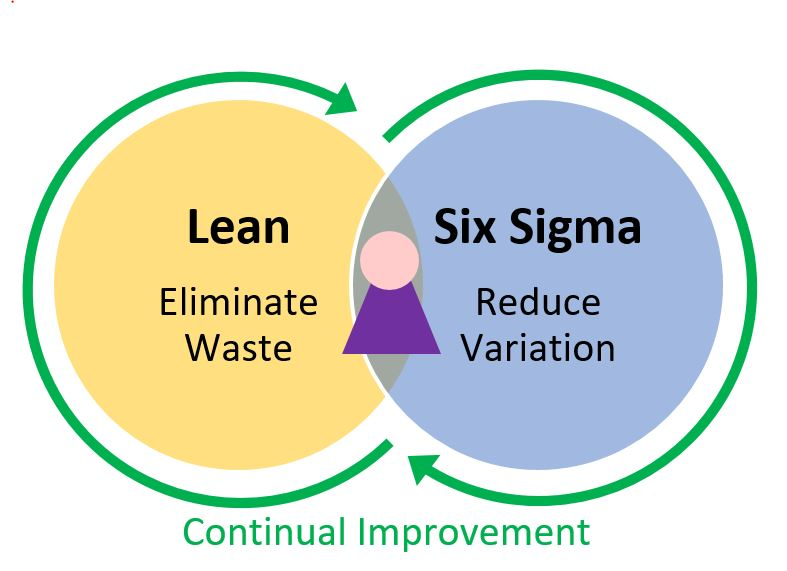Is Lean Six Sigma Worth It? Exploring its Relevance, Functionality, and Applications
Introduction
In today's competitive business landscape, organizations strive to achieve optimal efficiency, productivity, and quality. One methodology that has gained significant recognition in recent years is Lean Six Sigma. In this article, we will delve into the world of Lean Six Sigma, addressing its worth, relevance in today's industry, its inner workings, and the industries where it finds extensive application.
Is Lean Six Sigma Worth It?
Lean Six Sigma combines two powerful approaches: Lean methodology, which aims to eliminate waste and improve efficiency, and Six Sigma, which focuses on reducing process variation and enhancing quality. By integrating these methodologies, organizations can achieve significant improvements in operational performance, customer satisfaction, cost reduction, and profitability.
Benefits of Lean Six Sigma
Lean Six Sigma offers numerous benefits that make it worth the investment:
a. Improved operational performance: Lean Six Sigma helps organizations identify and eliminate process inefficiencies, resulting in streamlined operations, reduced cycle times, and increased productivity.
b. Increased customer satisfaction: By focusing on delivering quality products or services that meet customer expectations, Lean Six Sigma enables organizations to enhance customer satisfaction, loyalty, and retention.
c. Cost reduction and profitability: Lean Six Sigma identifies and eliminates waste, leading to reduced costs, improved resource allocation, and ultimately, enhanced profitability.
Is Lean Six Sigma Still Relevant?
Lean Six Sigma's relevance remains strong in today's industry, despite the ever-evolving business landscape. Here's why:
Adaptable to various industries and sectors:
Although Lean Six Sigma originated in the manufacturing sector, its principles and tools are adaptable to diverse industries, including healthcare, finance, logistics, and software development. The methodology's flexibility allows organizations to tailor its application to their specific needs and challenges.
Addressing modern challenges and demands:
Lean Six Sigma continues to evolve to address emerging challenges and demands in the business world. It integrates well with emerging technologies, such as automation and data analytics, enabling organizations to harness the power of digital transformation and drive continuous improvement.
How Lean Six Sigma Works
Lean Six Sigma follows a structured problem-solving approach known as DMAIC (Define, Measure, Analyze, Improve, Control):
Define phase:
In this phase, organizations clearly define the problem, project goals, and customer requirements. It involves identifying the scope of the project and establishing measurable objectives.
Measure phase:
During this phase, relevant data is collected to assess the current performance of the process. Key metrics and performance indicators are established to measure process efficiency, quality, and effectiveness.
Analyze phase:
In the analyze phase, data collected in the previous stage is analyzed to identify root causes of process inefficiencies or defects. Tools such as process mapping, value stream analysis, and statistical analysis are used to gain insights into the underlying issues.
Improve phase:
Based on the analysis, organizations develop and implement solutions to address the identified issues and enhance the process. Lean Six Sigma utilizes various tools and techniques, such as root cause analysis, brainstorming, and pilot testing, to drive process improvements.
Control phase:
The control phase focuses on establishing controls and metrics to monitor and sustain the improvements made during the previous phases. It includes developing standard operating procedures, implementing training programs, and creating feedback mechanisms to ensure ongoing process performance.
Where is Lean Six Sigma Used?
Lean Six Sigma has found extensive application in various industries due to its versatility and effectiveness:
Manufacturing industry:
Lean Six Sigma originated in manufacturing and has been widely used to optimize production processes, reduce defects, improve supply chain management, and enhance overall operational efficiency.
Healthcare sector:
Lean Six Sigma has gained traction in healthcare organizations, where it is utilized to streamline patient flow, minimize waiting times, reduce medical errors, and enhance the quality of care.
Financial services:
In the finance sector, Lean Six Sigma is employed to streamline banking processes, optimize loan processing, reduce transactional errors, and improve customer experience.
Supply chain and logistics:
Lean Six Sigma helps organizations identify and eliminate bottlenecks in supply chain and logistics operations, leading to improved inventory management, reduced lead times, and enhanced order fulfillment.
Software development and IT:
Agile software development teams have embraced Lean Six Sigma principles to improve their processes, reduce defects, enhance software quality, and deliver value to customers efficiently.
Conclusion
In conclusion, Lean Six Sigma proves its worth by driving operational excellence, improving customer satisfaction, reducing costs, and enhancing profitability. Its continued relevance in today's industry is evident through its adaptability to various sectors and its ability to address modern challenges. By implementing Lean Six Sigma and following the DMAIC methodology, organizations can unlock their true potential, achieve sustainable growth, and gain a competitive edge in the market. Embracing Lean Six Sigma requires commitment, training, and a cultural shift, but the long-term benefits far outweigh the initial investment.

